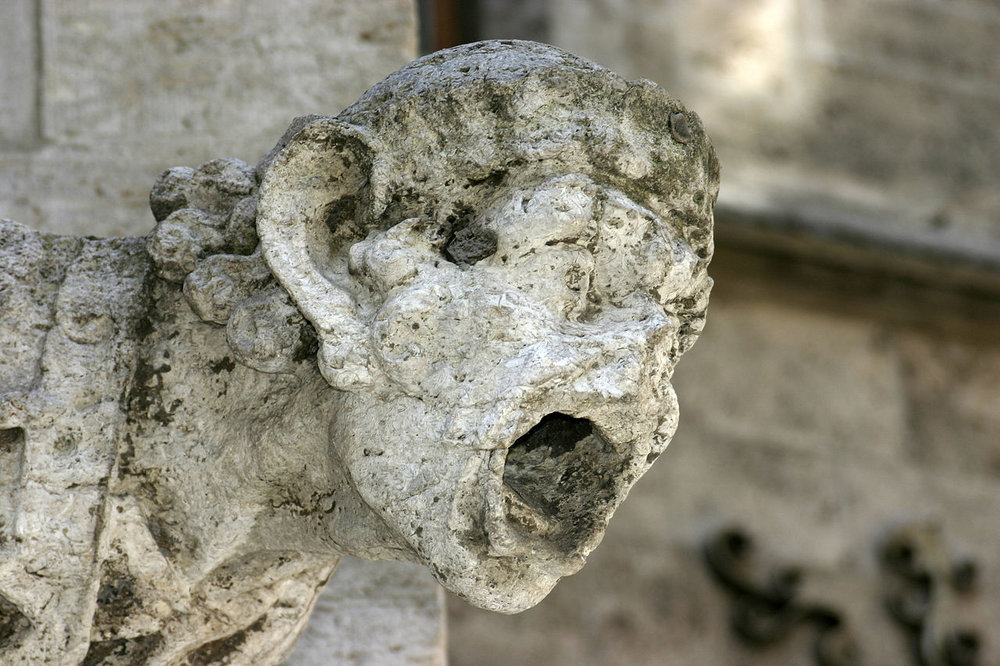And now comes the acid rain

Rain is a sign of hope and life, especially in low precipitation regions like Iran, but in some instances it can be harmful both for humans and the environment. I’m not talking about floods, rather about the sneaking effects of air pollution on rain which have added another item to the long list of environmental threats: acid rain.
What is acid rain?
An easy and general definition of acid rain can be summarized as any rain, fog, sleet or snow that has been turned acidic by pollutants in air.
Nitrogen Oxides (NOx) and Sulfur Dioxide (SO2) are the two main causes of acid rains; pollutants which mostly result from burning fossil fuels.
The pH value of water droplets determine the acidity level of rains. Generally all rains are slightly acidic since some natural oxides exist in the air all the time. The pH value of an unpolluted rain is between 5 and 6.
When the pH value of water droplets falls below this range, we call it acid rain.
It is interesting to note that from one hand, the pH level of vinegar and lemon juice are 2.2 and 2.3 respectively and from the other, typical acid rains have the pH value of 4. So when vinegar and lemon juice don’t cause any harm to us, why should we be concerned about acid rains?
Damages of acid rain
Acid rains can have a wide range of negative effects on our environment, cities and even our health.
The most prominent damage is one imposed on aquatic ecosystems. The pH level of waters in streams, rivers and lakes should be around 4.8 to let aquatic plants and animals survive. Acids can be accumulated over time and lower the overall pH of water, making it hard or impossible to sustain life.
It destroys trees’ leaves and arrests their growth and as a result, make them more vulnerable to extreme weather condition, diseases and insects.
Acid rain also changes the pH value of soil, leading to the extermination of some microorganisms and disturbing soil’s biological activity.
Environment is not the only sufferer, our buildings and constructions are influenced by acid rain too. It makes building, especially those built with limestone, susceptible to decay. Even our cars, airplanes, steel bridges and pipes are all influenced by that.
As far as human health is concerned, we are not directly affected by acid rain since it is too dilute to cause any serious health problem but inhaling its dry depositions, which mainly include nitrogen oxides and sulfur dioxide, are too dangerous for our health.
What are the causes?
We can categorize the sources of acid rain into two groups of man-made and natural.
Among natural sources, volcanic emissions have the most significant share. The gases released by volcanic activities can make the strongest acid rains – with even the pH value of 2. Also, lightning strikes naturally produce nitric oxides which react with water to produce nitric acid, hence developing acid rain.
However, the primary contributors to this harmful rain are human activities producing chemical gas emissions. Power generation facilities which use coal as their fuel have the most significant share. Motor vehicle and factories stand next in this regard.
“Areas suffering from air pollution caused by fossil fuels will certainly face acid rain; and Tehran is not an exception,”
Some of its other features
Acid rain is colorless and those rains which seem to be muddy are not acidic, said Amin-Hossein Naqshineh, prominent weather forecaster of Iran Meteorological Organization, Tasnim reported.
After the start of an acid rain, the acidity will gradually decrease but that very first minutes of rain brings about its harmful effects, he highlighted.
Naqshineh went on to say that PM2.5 fine particles have no role in acid rain.
Another feature of acid rain is that it can starts raining in areas which have clean air. How? The wind can push the harmful gases away from polluted areas, leading to the formation of acid rains in clean neighboring regions.
Acid rain in Iran
“Areas suffering from air pollution caused by fossil fuels will certainly face acid rain; and Tehran is not an exception,” added the meteorological expert.
Tehran, Karaj, Tabriz, Ahwaz and Arak are among the cities which are facing with severe air pollution.
The main cause of air pollution in Iran, as officials have repeatedly acknowledged, are vehicles – including substandard cars and low quality fuels.
Also one cannot neglect inefficient management practices which aggravate the situation. To name one of recent practices, we can refer to the new traffic scheme in Tehran which is going to be implemented from April 4.
According to the new scheme every vehicle can enter restricted zones with paying a tax between 160,000 and 360,000 rials (nearly $3.5 – $7.5), depending on the time of entrance (being most expensive during rush hours). Many experts believe that this scheme will only encourage people to use their personal cars, leading to more congestion, air pollution and potential acid rains.
What can we do?
One of the measures adopted for aquatic ecosystem affected by acid rain is adding lime to the water to balance the pH level which is certainly a short-term remedial solution.
Controlling harmful gas emissions in power plants and even moving toward other sources of generating electricity are other means of meeting acid rain challenge.
To fight acid rain we have no choice other than fighting air pollution; everyone knows its solutions but due to their bitter nature, we lack determination.
MAH/MQ/MG
